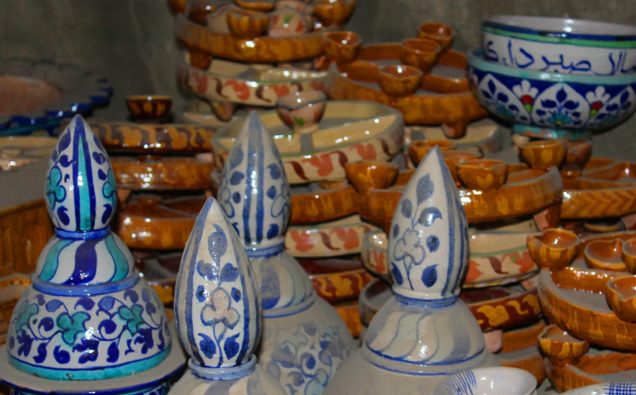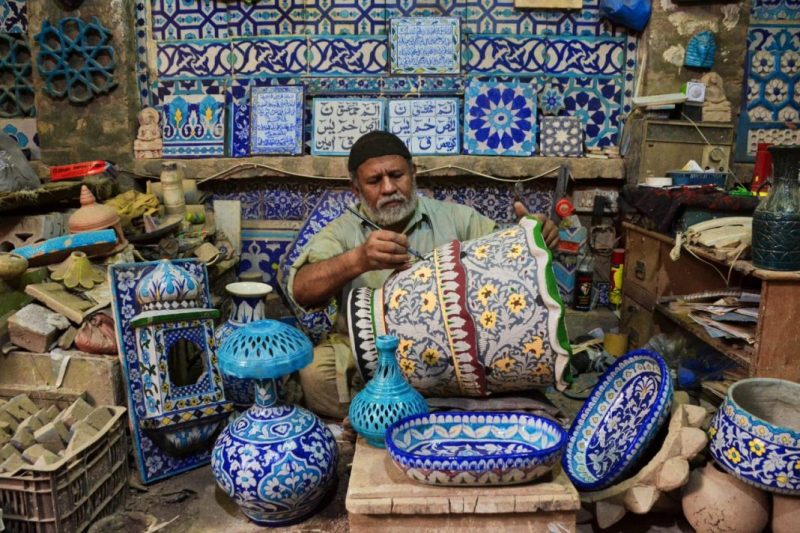
Clay has been used as an expression of aesthetic flair and craftsmanship since ancient times. Be it the art of sculpting, designing architectural masterpieces, and idolatry, clay has since taken on different forms of human creativity and flair.
Even today, clay-making seems to be part of every country and its culture in one way or the other, but in the past, the Chinese were the first to be exposed to this art. The Chinese discovered porcelain and clay oils and began making kitchen pots and culinary from it but their utensils looked very pale without the color blue. Then, the discovery of “cobalt oxide” in the Iranian kingdom sparked a stir. The oil on the ceramics turned into a beautiful and glowing blue after being heated in the kiln.
In 1301, Iran’s Abdul Qasim Qasani wrote a book on carving and colors from Iranians at any cost. Iranian ruler Shah Abbas called 300 sugar workers to Iran, where they came and they told them this. It turned out that Iran’s clay is not useful at all for making porcelain. They were disappointed, but together with their Iranian counterparts, they discovered the “blue pottery”. These utensils were named “blue pottery” by the British while in Iran it used to be known as “Sangeen” which means “made of stone”.

Then this art emerged from Afghanistan on the Indian subcontinent, where Multan, now a historical city in the southern part of Pakistan’s Punjab province, became its home. From Multan, this art form spread to Lahore, Delhi, and Agra, which became new centers.
The Iranian, Chinese, and Mongolians had a great influence on the art of clay and its climatization and it is also believed that the art of “Kashi” originated in the western Chinese city of Kashghar, which was later adapted by the Iranians. In Iran, the blue tilework is found in shrines and public places.
The tradition of painting blue on buildings and pots in Multan also goes back to ancient times, a special blue oil is developed for this art. The use of other colors in the art of tiling has been successful.
Why the color blue? Regarding the promotion of the blue color in the Multan region, artisans say this color is a symbol of extreme vision and affinity that soothes the soul and eyes. The blue color is very much in the culture and history of Multan and the Sindh province.

This art has found its imprint in Multan through cultural links with Persia, and Turkey. There was a time when (due to special order and texture of colors) Multani artisans were in great demand for many eras.
Even now, this art passes as a secret from one generation to the other, but today it has spread everywhere. Like Iran, many well-known buildings in Multan are masterpieces of tiling like mosques, and departments of Bahauddin University. The bungalows of Saraiki also exude this artwork.
During the excavation of Qila Khana Qasim Bagh in 1853, Sir Alexander Cunningham found oil tiles of Multan made in 900. It is said that these tiles were used in the mosque built after Arab commander Muhammad bin Qasim’s arrival in Multan.
Hence, we find this blue color in the form of tiles and stones in different areas of Sindh and Punjab most notably in Multan.

Some of the famous landmarks with the artwork include the grave of Uch Sharif, the native cemetery of Nawab of Bahawalpur, Dargah Sachal Sarmast, the Sindhi poet who wrote in several languages, the shrine of revered spiritual figure Shah Abdul Latif Bhattai, the graves of the Talpurs in Sindh, Lahore museum, the Holy church Bannu, Darbar of pioneering Punjabi poet Baba Farid ud Din in Pakpattan and mansions and bungalows
The Multani paving has also been done in Qatar’s famous red and blue mosques, while this industry of Multan is seen in the prime minister’s house, the president’s house in Islamabad, five-star hotels, and in exhibitions at the British museums in London.
The Multani paving has also been done in Qatar’s famous red and blue mosques, while this industry of Multan is seen in the prime minister’s house and the president’s house in Islamabad, five-star hotels, and exhibitions in the British museums in London.










